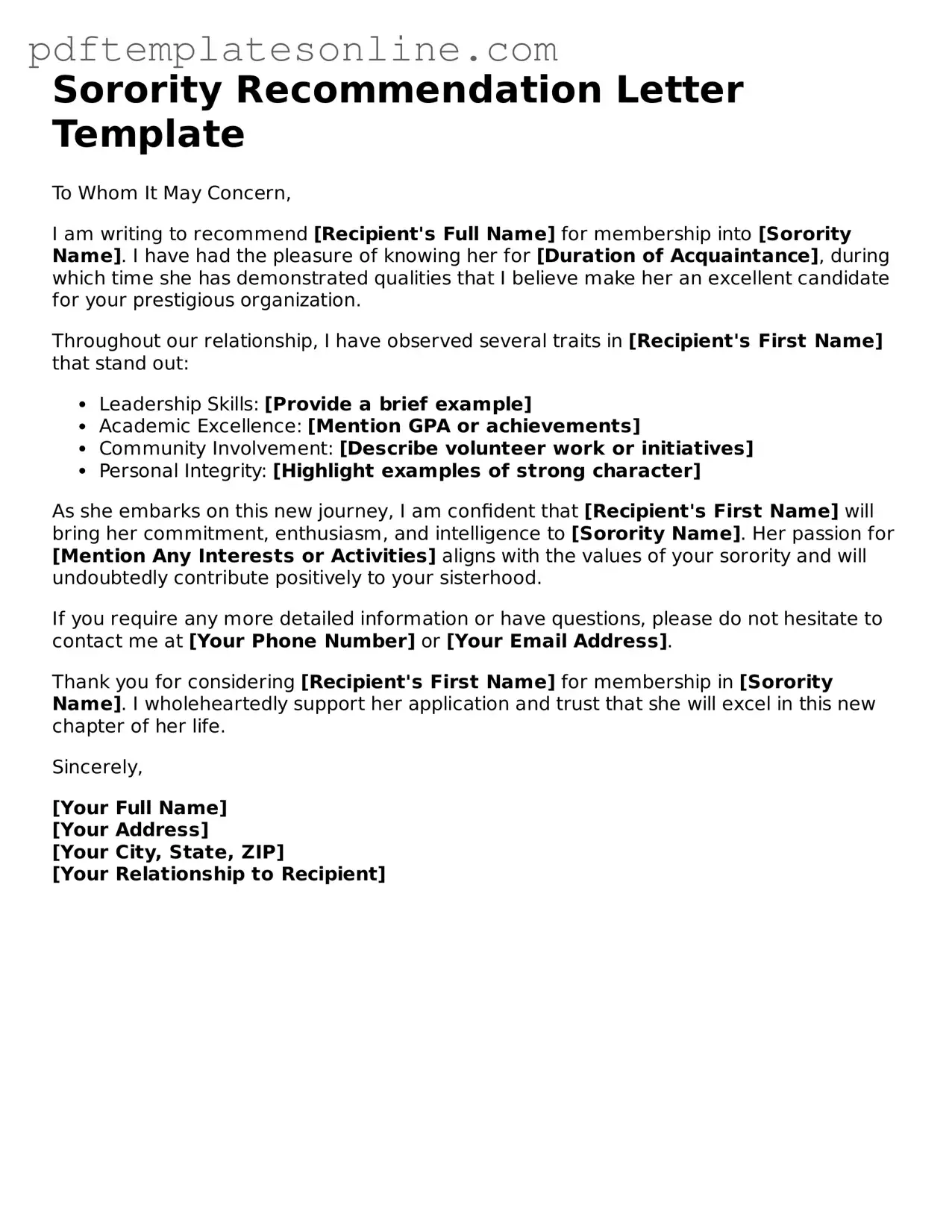Filling out a Sorority Recommendation Letter form can be a crucial step in the sorority recruitment process. However, many individuals make common mistakes that can hinder their chances of receiving a favorable recommendation. Understanding these pitfalls can help ensure a smoother application experience.
One frequent mistake is not providing enough personal information. It's important to include details such as the candidate's full name, contact information, and academic achievements. Omitting this information can lead to confusion and may cause the recommendation to be overlooked.
Another common error is failing to adhere to submission guidelines. Each sorority may have specific requirements for formatting, length, or content. Ignoring these guidelines can result in the recommendation being dismissed, as it may not meet the sorority's standards.
Some individuals also neglect to proofread their recommendations. Spelling and grammatical errors can detract from the overall impression of the candidate. A well-written letter reflects positively on both the writer and the candidate.
In addition, many people forget to include specific examples that highlight the candidate's strengths. Instead of using generic statements, it’s beneficial to provide anecdotes that demonstrate the candidate's leadership, character, and involvement in the community. This adds depth to the recommendation.
Another mistake is using overly formal language. While professionalism is essential, the letter should still convey a personal touch. A friendly tone can make the recommendation feel more genuine and relatable.
Some recommenders fail to address the letter to the appropriate person. It’s important to know who will be reading the recommendation and to direct it accordingly. This shows attention to detail and respect for the process.
Additionally, many individuals do not disclose any potential conflicts of interest. If the recommender has a personal relationship with the candidate, it should be mentioned. Transparency builds trust and credibility.
Another common oversight is not submitting the recommendation on time. Each sorority has deadlines, and missing them can mean the recommendation is not considered. Planning ahead is crucial to avoid this issue.
Lastly, some people forget to follow up after submitting the recommendation. A polite inquiry about the status can show enthusiasm and commitment. It also provides an opportunity to clarify any questions the sorority may have.
